Chapter 4-The Wash, the Witch and the Water God
(OK, I admit a famous C.S. Lewis novel gave me the inspiration for the title.)
As can be seen in the photos there is a beautiful stream in Keet Seel Canyon. I have no idea how many times the trail traverses the creek. I quit counting somewhere around 37. Fortunately it was shallow and since it was a hot day the cold water felt good. I even heard frogs croaking on occasion, a rarity in Arizona in my experience.
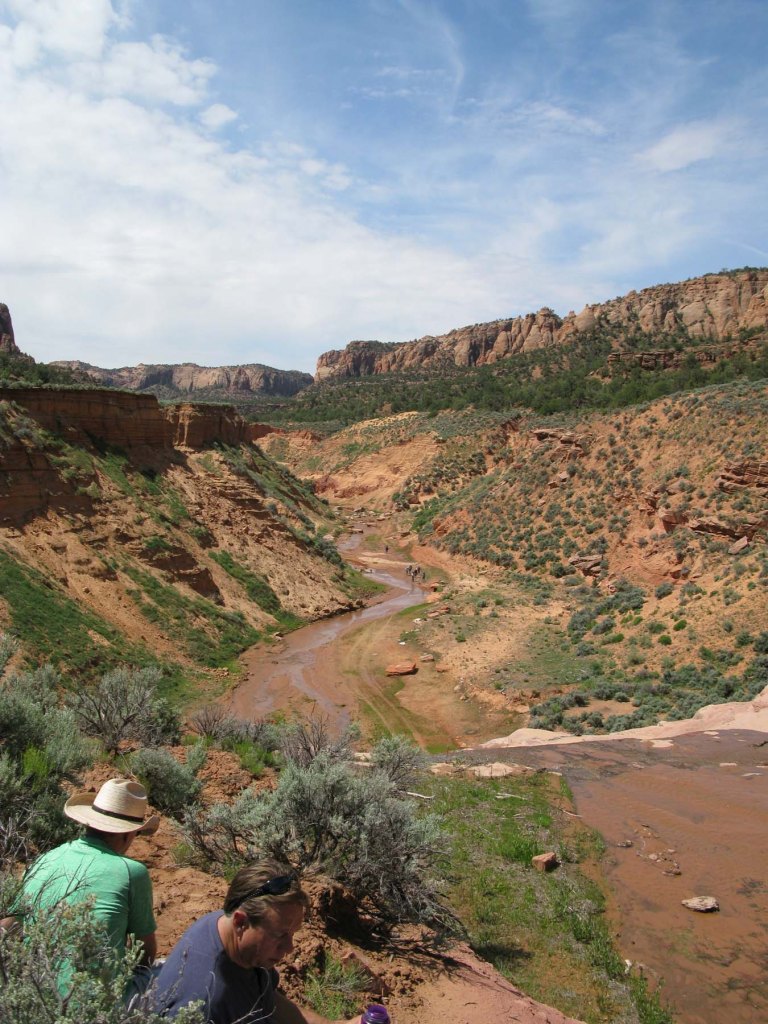
- Taking a break above the waterfall. Todd Newport (l) and Bryan Hill.
However the wash at the mouth of Tsegi Canyon was not always a wash, it is said. Around 1880 it was instead “…low green meadows…where water came like fingers out of a hill.” The streams were blocked by a large silt dam. Instead of flowing creeks, Tsegi, Keet Seel and its tributaries were populated with many small lagunas.
This apparently did not suit an elderly Navajo man who was known to practice witchcraft. He cast a spell to bring all the water from the lakes in Floating Reed Canyon (one of Tsegi’s many side canyons) to Todanestya, near today’s Laguna Wash.
 Arriving at the Ranger’s station -finally!
Arriving at the Ranger’s station -finally!
There was just one problem. Floating Reed Canyon was also the home of the Water God. On the day the spell was cast “a great storm rose. The rain came down in torrents. Black clouds hung over Tsegi, and the lakes broke. The water came rushing down into the pass, out along the low-lying land beside the ridge of red rocks. On the flood came old phosphorescent logs, whole trees –and the People that night saw the Water God pass by in the stream, breathing fire as he went.”
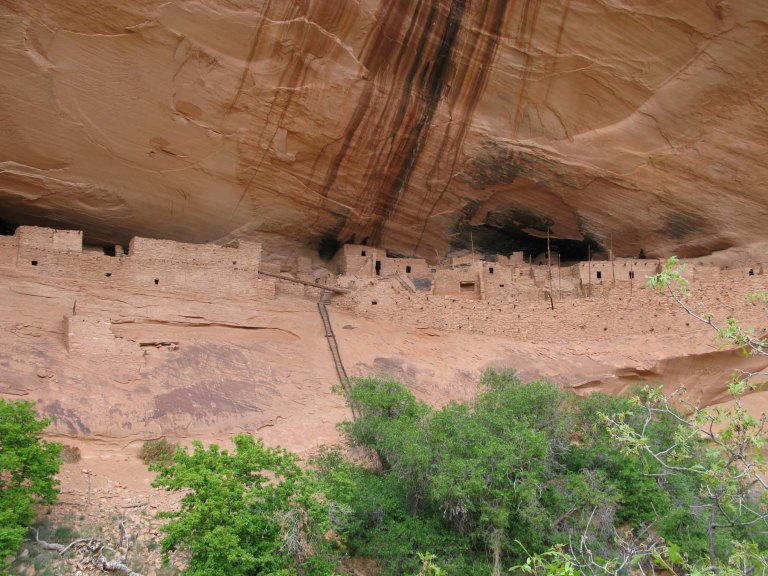
- Yep…we’ll be taking that ladder to the top…yep. The wall to right side of the ladder was restored and reinforced in the early 1930s…story to follow in the text below (See “The Source of the Dispute?”)
As you can probably guess it didn’t turn out well for the witch. He “paid the penalty of death at the hands of the People.” According to the on-site Ranger, Steve Hayden, he was drawn and quartered by his fellow tribal members.
I later asked Harvey Leake if he had ever heard Steve’s version of the ending. He said he had, but he didn’t know where Steve got his information. He has never seen the grisly details of the witches demise anywhere in writing.
OK, then. For his evil deeds and water resource mismanagement the witch was drawn and quartered, it is said.
Source: Frances Gillmor and Louisa Wade Wetherill, Traders to the Navajos, pg. 78-79 University of New Mexico Press, 1952
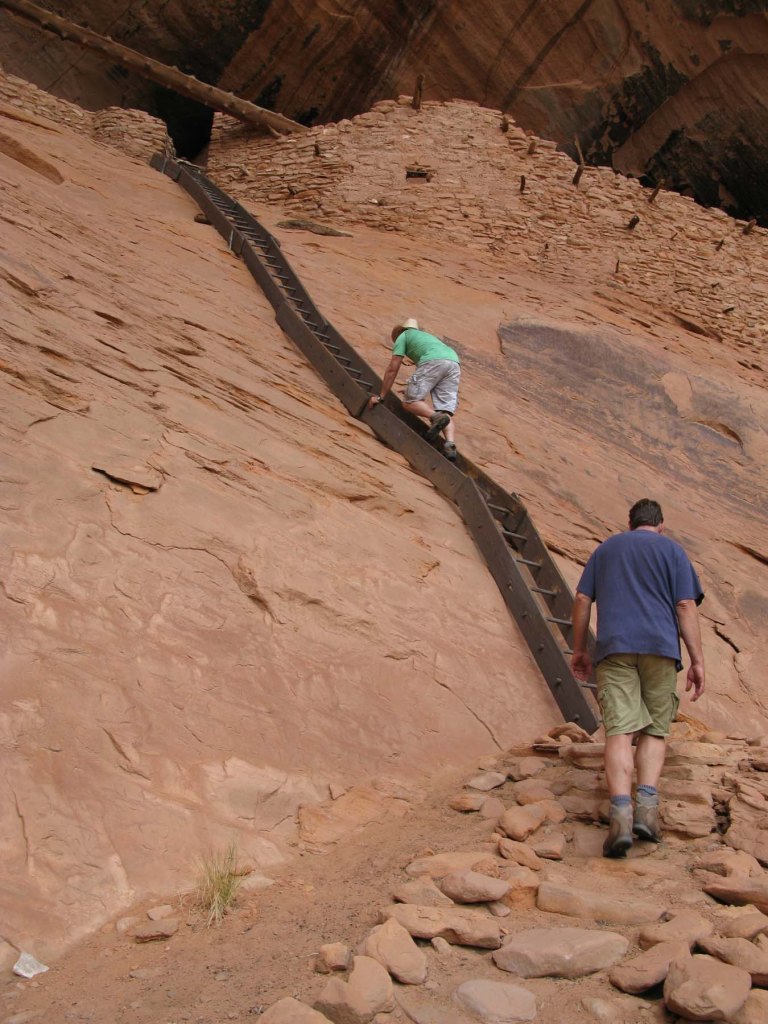 Up we go…
Up we go…
Chapter 5-Who Came First
Tsegi Canyon is a labyrinth of both box canyons and mysteries. As mentioned previously there are many unknowns as well numerous stories based largely on conjecture regarding much of the area’s history.
However the following is universally agreed upon
- With 160 rooms Keet Seel is the largest cliff dwelling in Arizona.
- The community was occupied around 1250 to 1300 AD then abandoned rather quickly as indicated in the photos. Exactly why is a topic of debate, although most agree drought or other changes in climate forced the occupants to move. Some theorize war, perhaps even intertribal, was a factor also.
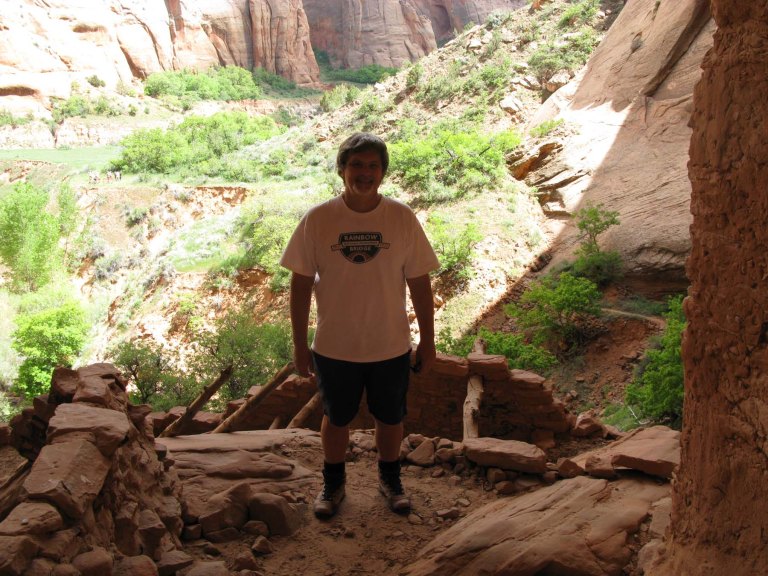
- Made it!
So who was the first to “discover” the Keet Seel ruins?
Obviously the area’s natives knew of their existence centuries before the first Anglo. Wolfkiller claimed the Dineh believed the dwellings were built by a tribe from the Navajo Mountain area. It is not known where Keet Seel’s inhabitants came from. But there is no doubt their descendants occupy the Hopi Mesas today.
Richard Wetherill, also credited with discovering Cliff Palace in Mesa Verde is widely accepted as the first Anglo to discover Keet Seel. As I wrote in Shadows on the Mesa, Wetherill came across the site by accident while he was chasing his escaped mule, Neephi down the canyon. Accepted as fact for decades, even that version is now a subject of minor debate.
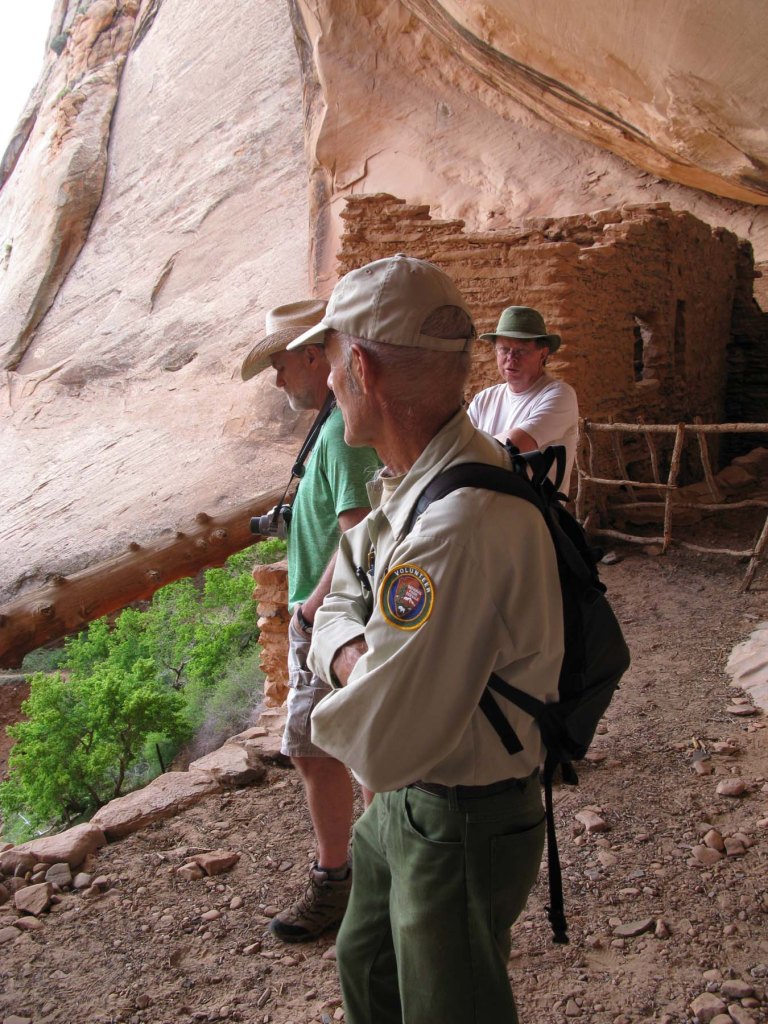 Left to right: Steve Hayden, on-site ranger, Todd Newport, Harvey Leake
Left to right: Steve Hayden, on-site ranger, Todd Newport, Harvey Leake
For a well-researched account of Richard Wetherill’s first expedition to the area check out the following link by Fred Blackburn.
Here’s an interesting excerpt from the link:
“Sometime during December of 1894 and April of 1895 Richard Wetherill once again left Mancos, Colorado to explore deep into the heartland of the Navajo Nation…This is an unusual expedition from the outset. This is the only major expedition not funded by a donor. This is the only expedition that shows a near complete absence of photograph, written record, and document. This is the only expedition which thus far finds no paper trail on the sale of nearly 400 artifacts uncovered during the expedition.”
How fitting.
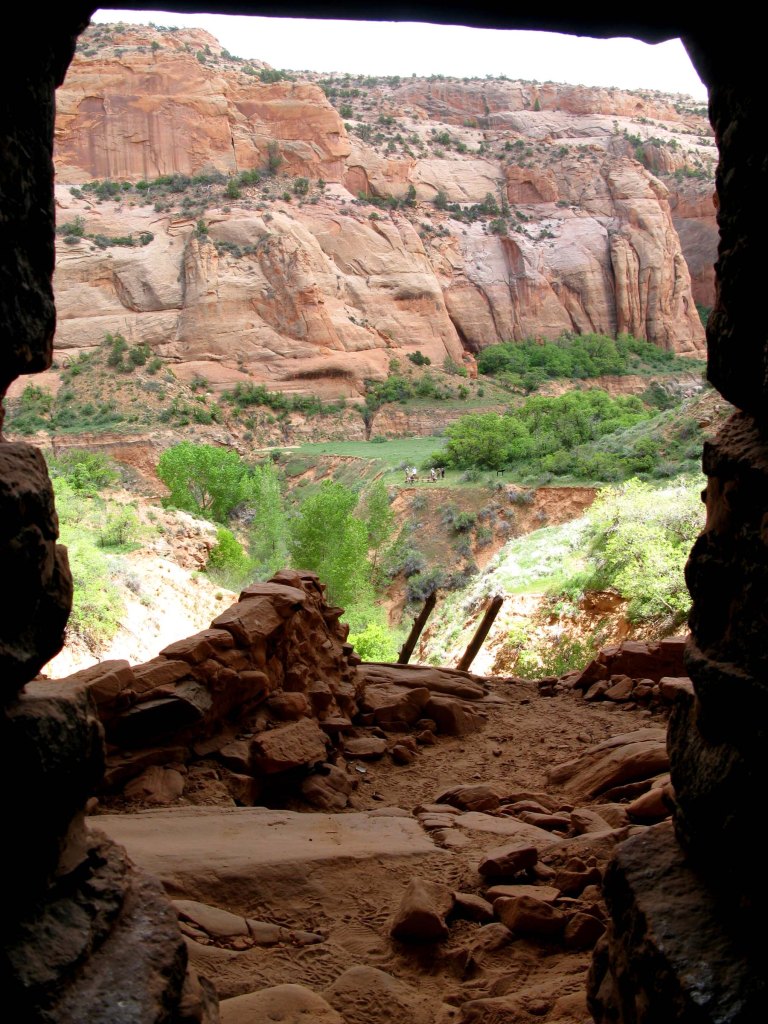 View across the canyon from the ruins. Since Harvey and Steve were old friends we received a VIP tour which lasted much longer than the typical one hour visit. As a result the group behind us, seen across the ravine, eventually became impatient and unruly, hurling rocks and shouting obscenities . . . OK, I just made that up for dramatic effect. What is true is Steve had a photo of the arroyo circa 1900, and it was only about ten percent as wide as it is today. Seriously, I thought that was fascinating.
View across the canyon from the ruins. Since Harvey and Steve were old friends we received a VIP tour which lasted much longer than the typical one hour visit. As a result the group behind us, seen across the ravine, eventually became impatient and unruly, hurling rocks and shouting obscenities . . . OK, I just made that up for dramatic effect. What is true is Steve had a photo of the arroyo circa 1900, and it was only about ten percent as wide as it is today. Seriously, I thought that was fascinating.
To compound matters, during our visit to the ruins we were told by Ranger Steve of a recent inscription discovery somewhere in the area with the initials “SJ” dated “86”.
Harvey and Steve discussed the possibility of the man who carved his initials being a member of a U.S. geological survey crew. Possible…then again not likely since, as Harvey later pointed out, by 1886 most of the surveys were completed years before. It could have been someone from 1986 –perhaps one of my old climbing buddies, Steve Johnson. Nah, not likely.
So who was the first? I guess we could always credit Neephie.
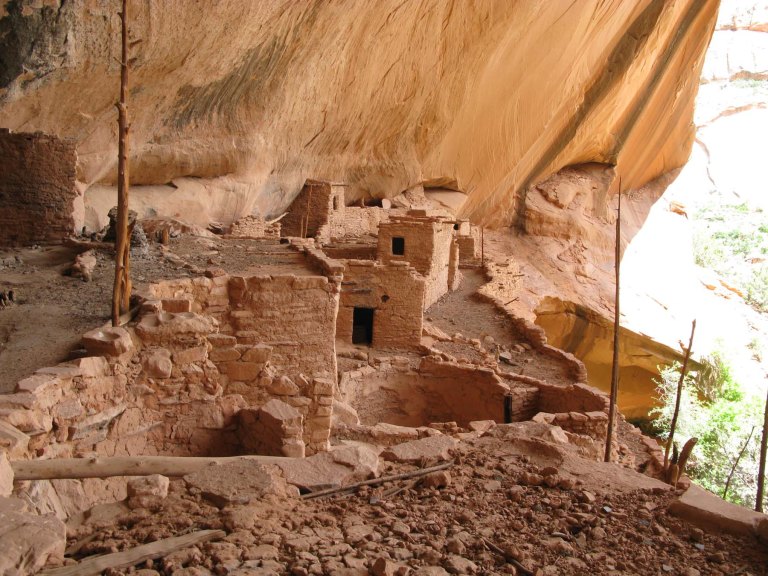
Yet another enigma: Bryan Hill, one of our expedition partners, was in possession of two 7-1/2 minute topo maps published by the USGS. He pointed out the one published in the 1970s identifies several cliff dwellings in Keet Seel Canyon in addition the famous ruins by the same name. However a more recent 7-1/2 minute map, published sometime in the last ten years, has neither the wording nor symbol to indicate any type of man-made structures in the area –ancient or recent.
A couple quick reconnaissances by Bryan turned up hard evidence the ruins were still located where the 70s edition indicated they would be. In other words, they may have disappeared from recent maps, but not the canyon. Hmmm…small mystery there. Perhaps it’s a matter of the government wanting to save money on printing costs…Yeah, that’s my theory.
Maybe Bryan could be credited with being the first to “rediscover” the ruins.
 No, the pot is not staged for dramatic effect…
No, the pot is not staged for dramatic effect…
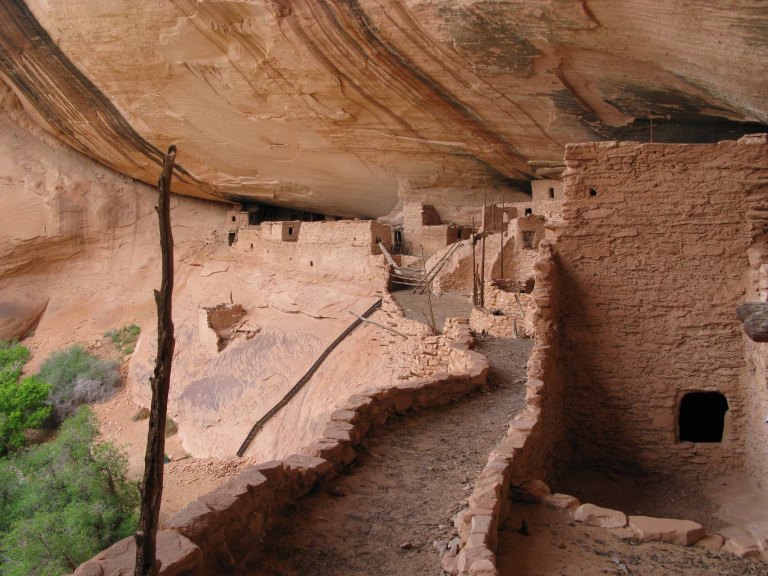
Chapter Six-The Source of the Dispute?
Now for the final episode of “Who the Heck Knows What Really Happened?”
Irwin Hayden was a Harvard educated field archeologist and the grandfather of today’s on-site ranger Steve Hayden. He led many museum sponsored expeditions in the late 1920s and early 1930s, including Casa Grande and Cornfield Canyon near Navajo Mountain. In 1933, while working for the Museum of Northern Arizona (MUNA), Irwin Hayden was the foreman for archeology projects at Keet Seel and Turkey Cave.
Milton Wetherill was another well-known archeologist employed by the Museum of Northern Arizona(MUNA). He was also Harvey Leake’s first cousin twice removed and the nephew of John and Richard Wetherill.

The Keet Seel project in the early 1930s was funded by the Civil Works Administration (CWA) and administrated by Harold Colton, MUNA’s founder and president. In addition to excavations, part of the project involved stabilizing the wall on the east side of the ruins. Much of the wall on the east side (right side in photos) had already fallen down and the entire structure was in danger of collapsing. According to Harvey and Steve, Milton Wetherill managed the construction crew rebuilding the wall while Irwin Hayden oversaw the excavations.
One day a construction worker fabricated a frame from wood which had been gathered in the canyon. Then, without seeking permission, he installed it in one of the ruin’s fireplaces. (See photo below.)
Irwin Hayden took great exception to the young carpenter’s actions. He believed the character of the restoration should be kept as natural and as original as possible. He also allegedly told the re-modeler something like “We’re not running a basic woodworking shop here!”
Milton Wetherill responded by telling Hayden, “You concern yourself with the excavations, I’ll take care of the renovations.”
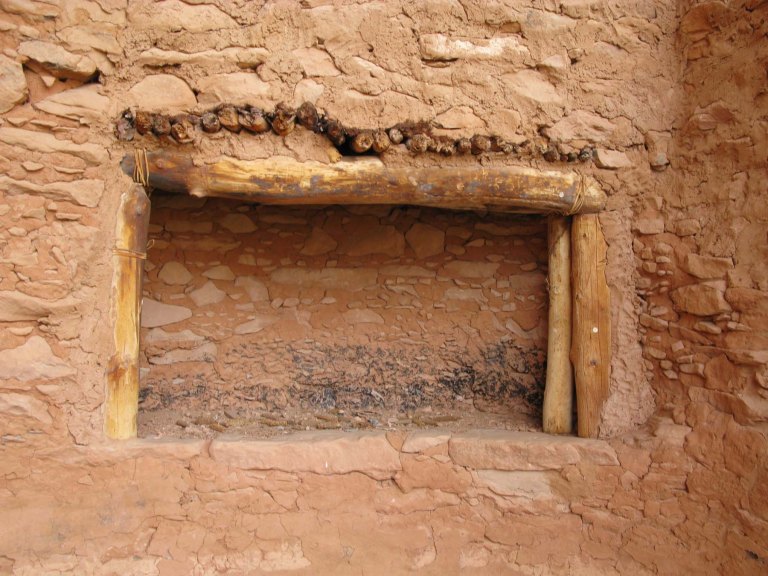
- The source of the dispute?
Shortly afterwards Irwin Hayden abruptly resigned his position and left the site permanently.
After telling the story, Harvey and Steve both agreed they were not certain why Steve’s grandfather departed when he did. Neither Irwin Hayden nor anyone else ever recorded his reasons for leaving. I chuckled silently to myself after hearing the story, “Couldn’t have been the disagreement over the remodeled window could it?…nah.”
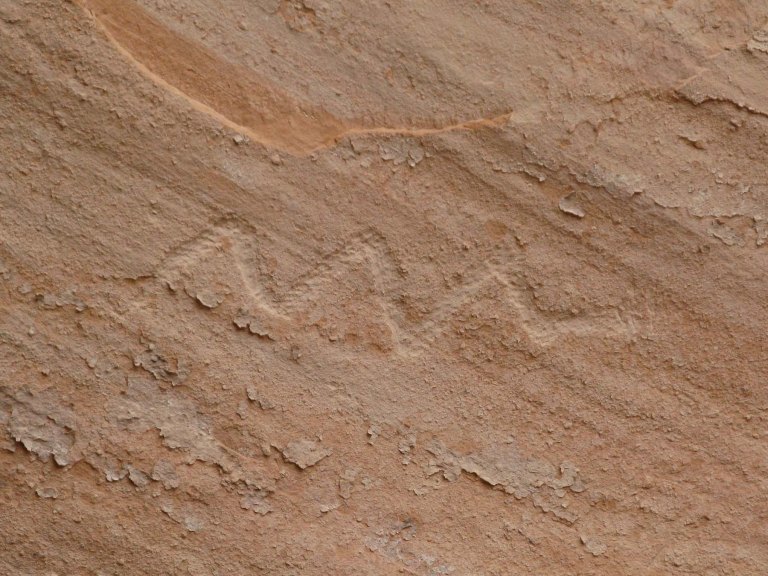
- Snake Clan petroglyph
But upon returning home and doing a little research I found the following information.
Anthropology at Harvard reveals Hayden “got in a brouhaha” with Lyndon Hargrave, an archeologist for the Rainbow Bridge-Monument Valley Expedition in 1935. Hayden claimed Hargrave was going on a “sophomoric sawing spree at Keet Seel to get dendrochronological samples.”
In other words Hargrave was indiscriminately cutting beams at the ruins to get growth ring samples –I think. To be honest I’ve never heard of anyone going on a “sophomoric sawing spree”, so I can only speculate what it really meant. I know it’s not anything I’ve ever done. It sounds like too much work.
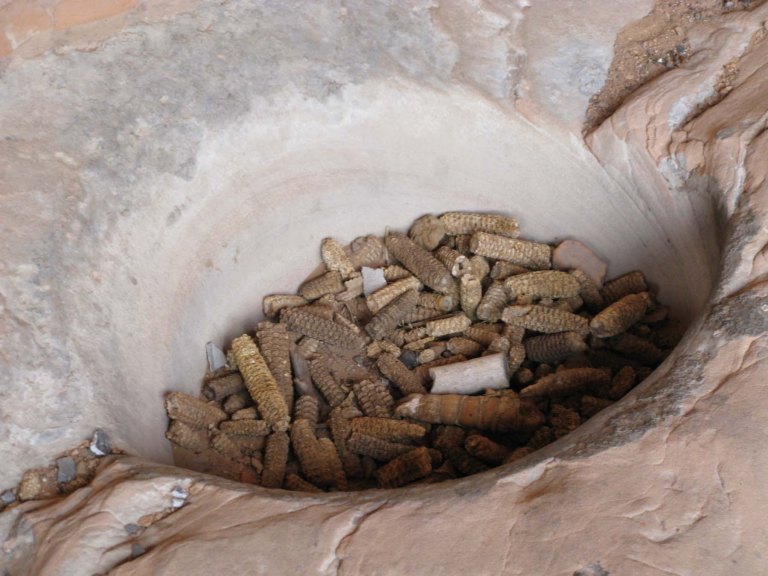 Yummy! 600 year old leftovers!
Yummy! 600 year old leftovers!
Could Irwin Hayden’s dispute with Hargrave have been the reason Hayden left? Julian Hayden, Irwin’s son, Steve’s father and a lifelong family friend of the Wetherills, once wrote his father was known to be “a bit thorny at times.” Maybe Irwin Hayden left for another unknown reason, maybe it was a combination of events, or maybe after spending nearly two years in one of the most remote spots in the U.S. he just wanted to go home.
It’s a viable theory to me. I only spent two days and one night in the canyon. Although I enjoyed it thoroughly I was also very glad to be headed home.
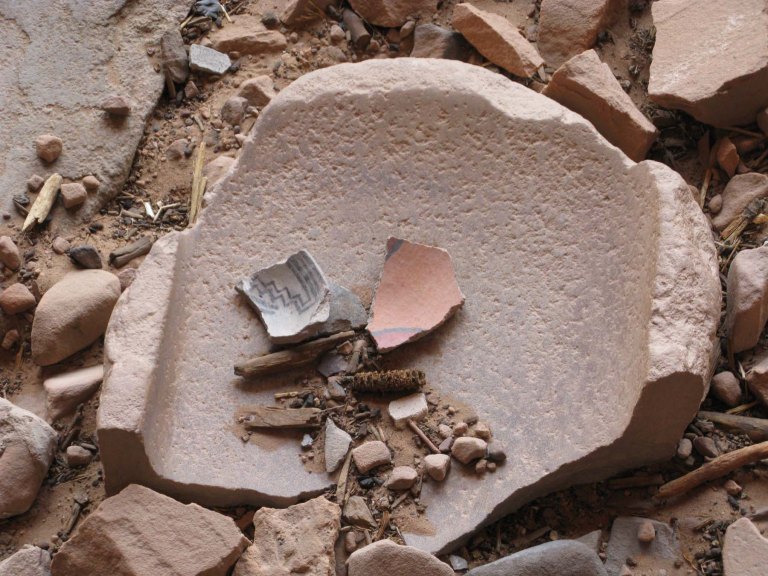
 Heading home the following morning
Heading home the following morning
Of course any adventure is sweetened by the story telling after the fact. As time goes on I’m sure anyone who listens will hear of a longer hike, a steeper climb, hotter weather, and more daunting challenges. But hey, that’s part of the reward. And like my tee shirt says, “Hiking-Cheaper Than Therapy.”
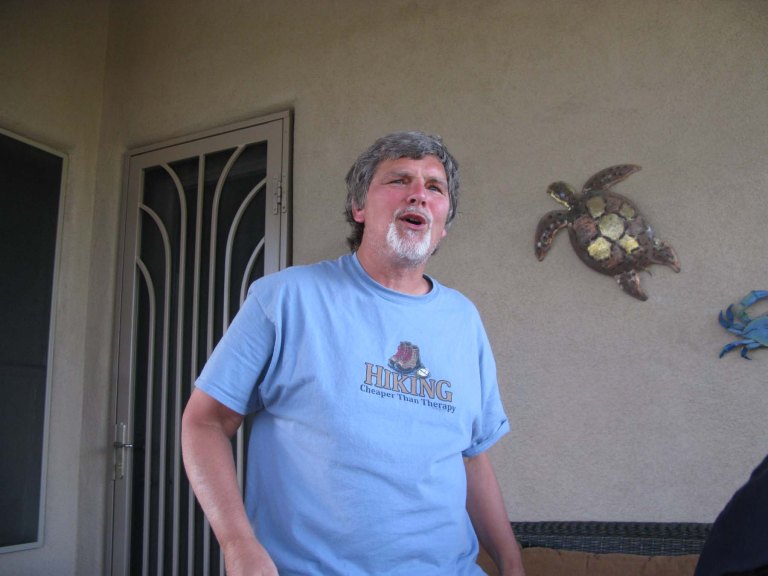
- Back home in Cave Creek the following day. At a friend’s house telling tall tales and boasting of the adventure.
Chapter Six Sources:
Field Man: Life as a Desert Archaeologist
Julian D. Hayden and Bill Broyles
2011
The University of Arizona Press, Tucson, AZ
Page 16
Anthropology at Harvard-A Biographical History, 1790-1940
David L. Browman and Stephen Williams
2012
Harvard College, Cambridge, MA
Page 312

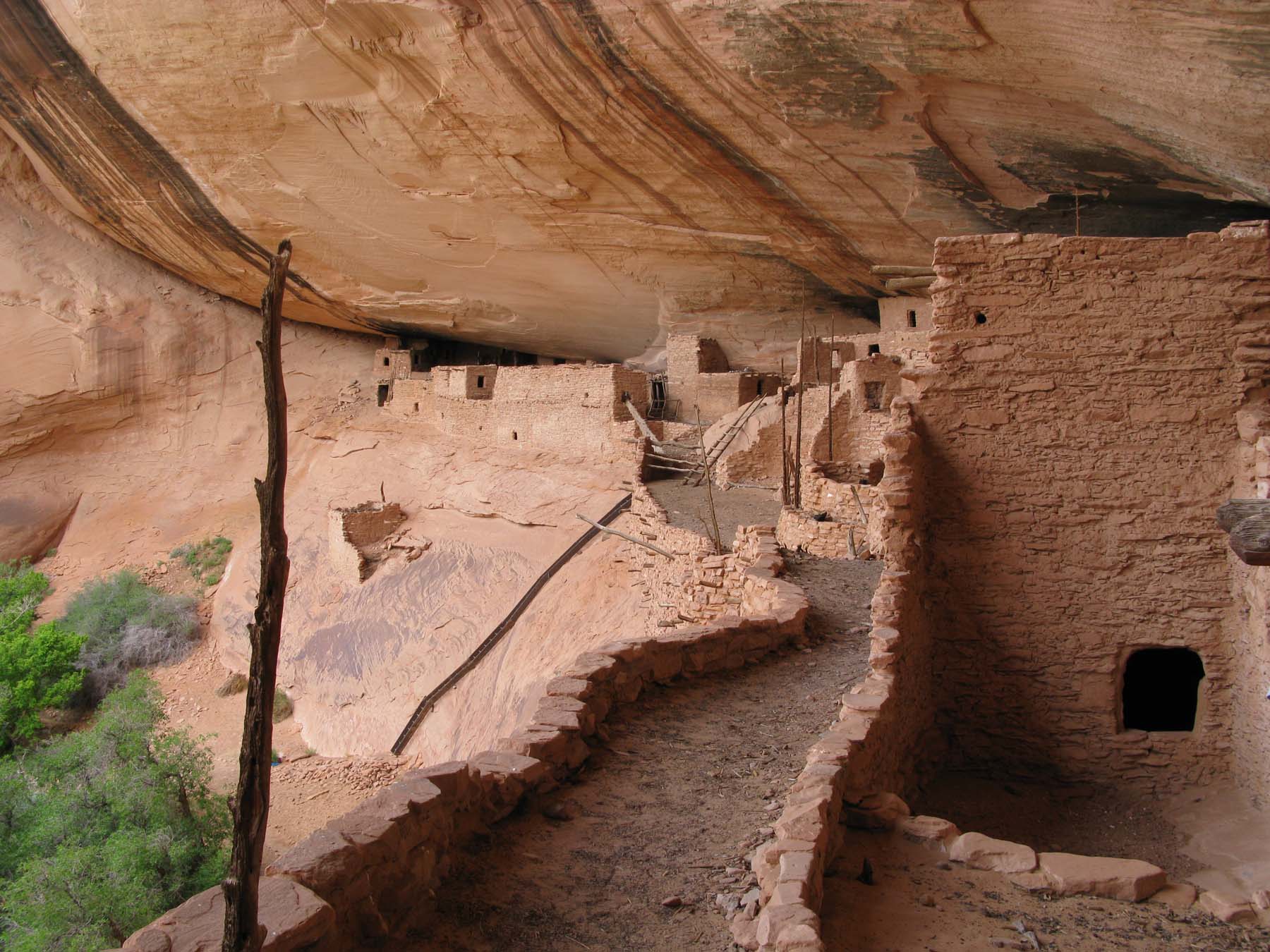
Hi Gary. I enjoyed your story telling! Here’s more:
The reason Irwin Hayden left the project, was since he could not force Milton Wetherill to undo the wood framed wall support in what was originally an interior wall niche in a large kiva, and he (Irwin) was unwilling to have his name ever associated with such an inauthentic “restoration”, his only choice was to resign. He wrote in a letter to his son “and I’d rather see Keet Seel disappear into the canyon than risk an argument with Hosteen [John Wetherill]. ”
Steve Hayden
Thanks, Steve. I seem to remember you telling at least some of that to us during the tour. But unfortunately I didn’t have anything writing or recording tools so I had to rely on my faulty memory.